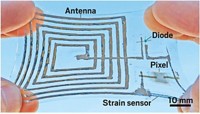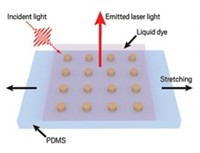Advertisement
Grab your lab coat. Let's get started
Welcome!
Welcome!
Create an account below to get 6 C&EN articles per month, receive newsletters and more - all free.
It seems this is your first time logging in online. Please enter the following information to continue.
As an ACS member you automatically get access to this site. All we need is few more details to create your reading experience.
Not you? Sign in with a different account.
Not you? Sign in with a different account.
ERROR 1
ERROR 1
ERROR 2
ERROR 2
ERROR 2
ERROR 2
ERROR 2
Password and Confirm password must match.
If you have an ACS member number, please enter it here so we can link this account to your membership. (optional)
ERROR 2
ACS values your privacy. By submitting your information, you are gaining access to C&EN and subscribing to our weekly newsletter. We use the information you provide to make your reading experience better, and we will never sell your data to third party members.
Analytical Chemistry
'Infofuse' Gets Message Across
New technology transmits chemically encoded messages
by Sophie L. Rovner
June 1, 2009
| A version of this story appeared in
Volume 87, Issue 22

Chemically coded flares may one day join the ranks of telecommunication methods. In a chemical analog of Morse code transmission, burning a metal-treated material reveals a message to a remote viewer. Harvard University chemistry professor George M. Whitesides, postdoc Samuel W. Thomas III, and their colleagues devised the chemical communication technique, which they call an "infofuse" (Proc. Natl. Acad. Sci. USA, DOI: 10.1073/pnas.0902476106).
With further development, this proof-of-concept technology could be used in applications such as a device to transmit information during a rescue operation, Thomas says. Or it could be combined with a sensor in a device that would transmit a warning signal when, say, a pollutant was detected in the environment, he adds.
The researchers encode a message by applying a succession of dots of various alkali metals on a fuse made of a nitrocellulose strip. To demonstrate the concept, they created a code in which a particular combination of metal dots corresponds to a particular alphanumeric character. The letter c, for example, is represented by a dot of lithium and rubidium followed by a dot of cesium.
Once the message is ready to send, the fuse is lit. As the flame moves through the nitrocellulose strip, each successive metallic dot burns and emits light of characteristic wavelengths. A spectrometer or camera ascertains which wavelengths are successively emitted, thereby revealing the identity and order of metals that had been placed along the strip.
Currently, the signal is detectable as far as 600 meters from the fuse, Thomas says. He believes this limit could be stretched beyond 1 km. Signals of greater complexity could be encoded by utilizing other properties of light, such as intensity, he adds.
No external power such as a battery or electricity is needed to encode or send messages: The metals can be dotted on the fuse by hand, and message transmission merely requires a flame. A. Prasanna de Silva, who studies molecule-based information transfer at Queen's University of Belfast, in Northern Ireland, believes the work is significant because until now, "no such self-powered information systems that transmit over fair distances" have been developed.




Join the conversation
Contact the reporter
Submit a Letter to the Editor for publication
Engage with us on Twitter